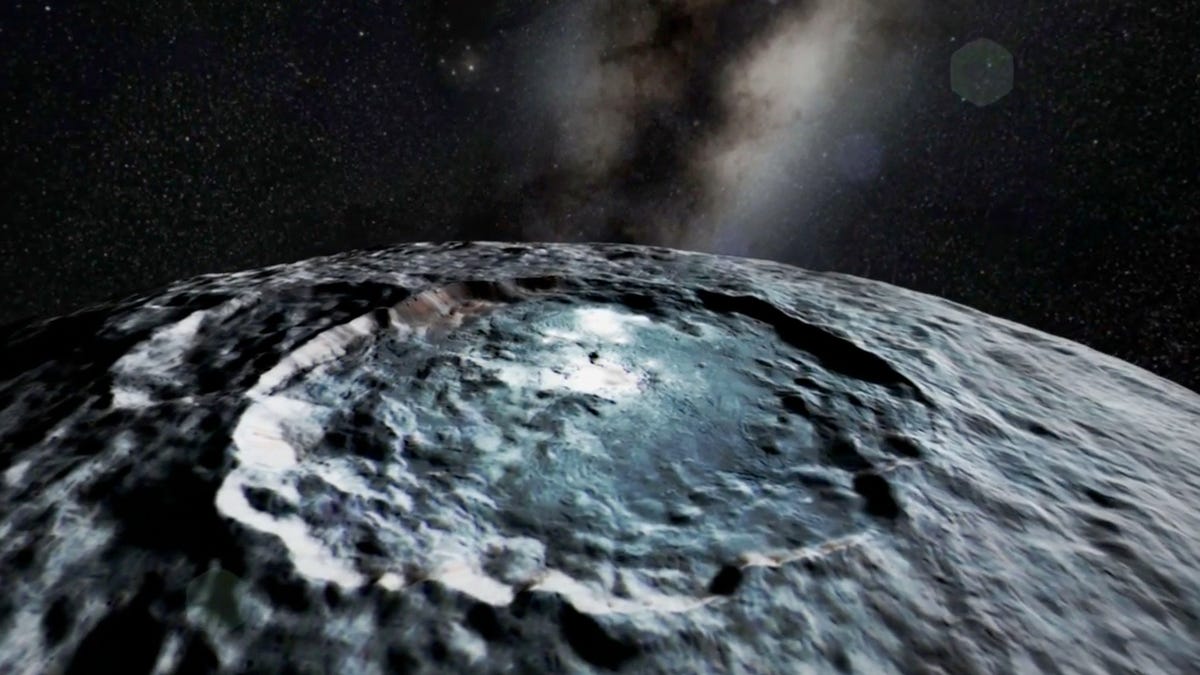Soar over dwarf planet Ceres' surface in revealing NASA video
Using real images taken from the spacecraft Dawn, NASA takes you on an animated tour of the largest body in the asteroid belt.

While the dwarf planet Ceres is now known for its mysterious "bright spots," which scientists now think are caused by a type of salt, it has a lot of other fascinating features, which you can see in a new NASA video.
From August through October 2015, NASA's Dawn spacecraft circled Ceres, located in the asteroid belt between Mars and Jupiter, and imaged its surface using its onboard high-resolution camera. Ceres has an equatorial diameter of 1,859 miles (2,992 kilometers), and Dawn circled at an altitude of 900 miles (1,450 kilometers) during that time. Now NASA has stitched some of those images together to create a video animation that simulates a flight over Ceres. The video was released Friday.
"The simulated overflight shows the wide range of crater shapes that we have encountered on Ceres. The viewer can observe the sheer walls of the crater Occator, and also Dantu and Yalode, where the craters are a lot flatter," Dawn mission scientist Ralf Jaumann said in a statement.
Occator, the crater where the flyover begins, is where those mysterious bright spots are situated. It's followed by six other geologic features named after "earthly agricultural spirits, deities and festivals," according to NASA, such as Urvara, Haulani and Ikapati.
Thanks to CGI effects, we're no strangers today to zooming around planets in sci-fi films. But it's pretty awe-inspiring to look at the surface of an actual object in our solar system -- located about about 257 million miles (414 million kilometers) away -- not a Hollywood creation, although there was some color-enhancing done to bring out the features of the surface. "Scientists believe areas with shades of blue contain younger, fresher material, including flows, pits and cracks," NASA explained.
Dawn is still circling and imaging Ceres and is now just 240 miles (385 kilometers) above its surface, so hopefully we'll get even better tours around the battered space rock in the coming months. This one is already an improvement over a similar animation released in June 2015.

